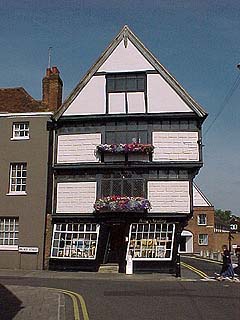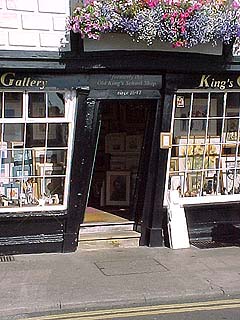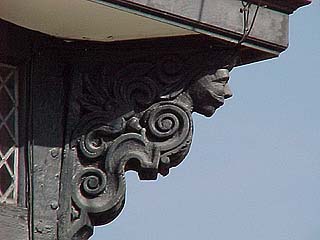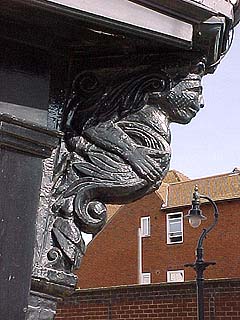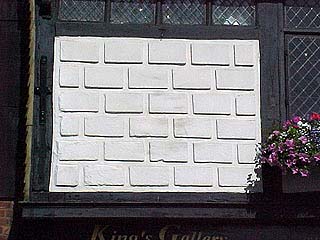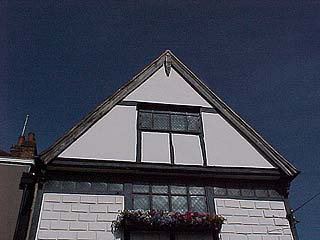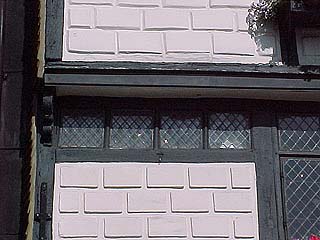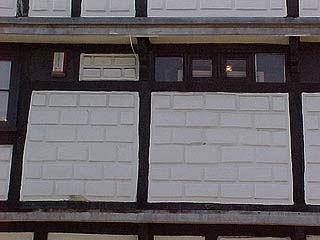| Notes:
The building is one of the best known in Canterbury -
known as the King's School shop. It is often thought to have
been built by Sir John Boys, but as he died in 1612 and there
is a later date on the apex of the gable (at the top), this
is probably not true. Some reports say this date is 1617 (e.g.
Quiney, see bibliography), others
say it is 1647, so I am not sure!
See the wonderful description
by the Canterbury Archaeological Trust on Peter Collinson's
Canterbury tour site.
It was probably built by a cloth merchant (draper) called
Avery Sabine, whose initials are also on the apex of the
gable. This part of the city was occupied by many 'strangers'
or foreigners, many in the cloth and weaving trade, and
this man was probably one of them - his name sounds French.
Many got rich, and this house has many signs of wealth.
The small windows (see photos below) may have been to light
the workshops in the second and third floors.
It was close to falling down in recent years. It stands
above a brick cellar and has a contemporary brick fireplace
- the insertion of another chimney stack later probably
called the structural weakness which is now mended.
The fine wood carving is its best feature, as you can see
from the photos below.
But also of note are the small windows (called clerestories)
at the side of the building - restored - designed so that
you could look out at the street without being seen (see
the last photos below). Compare these windows with others
such as at 1 St. Peters' Street.
|



